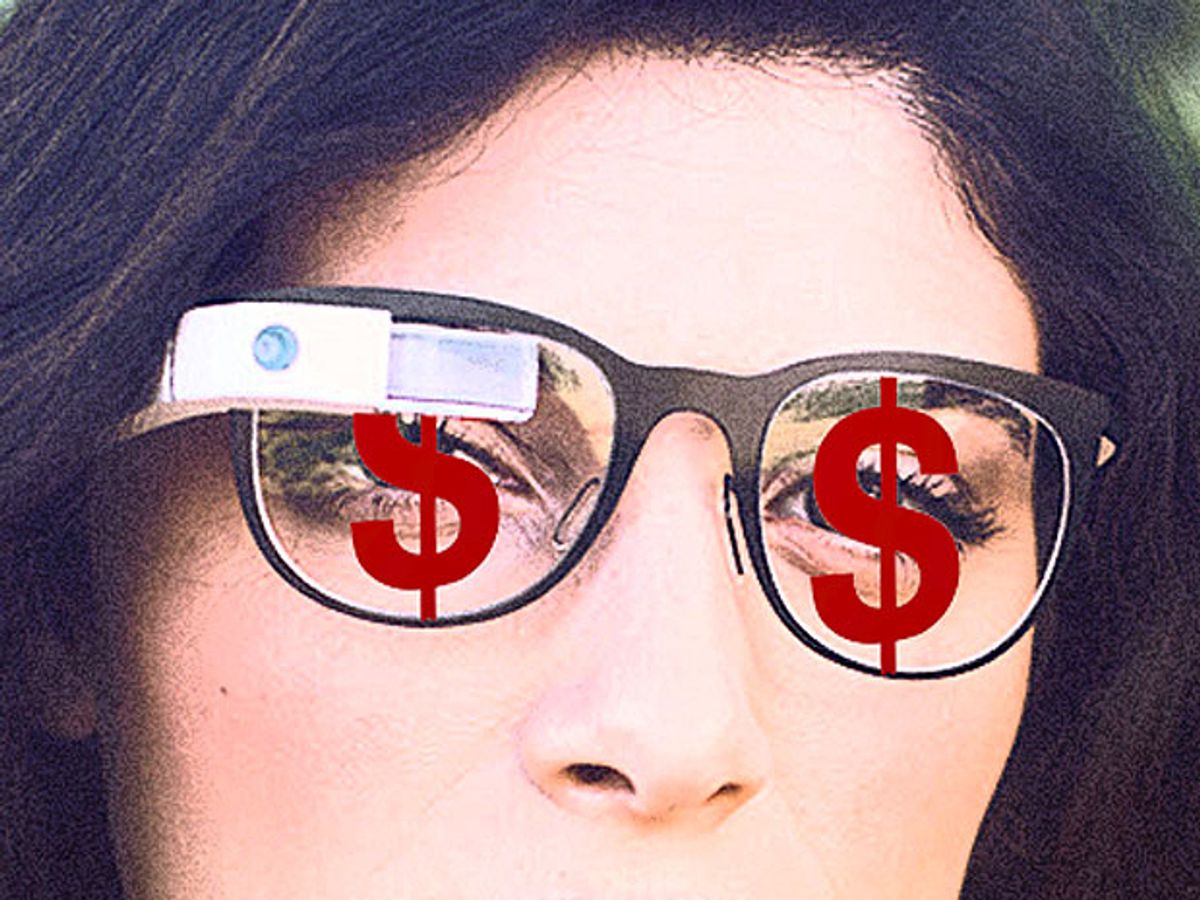Owners of Google Glass pay US $1500 for a prototype that costs Google just $152.47 in hardware and manufacturing costs, according to a recently published analysis by a technology research firm. But that doesn't mean Google is getting away with a huge profit by charging ten times as much as its hardware costs for the smart glasses.
The hardware and manufacturing costs for Glass come from a new teardown report by IHS Technology that estimates direct material costs at $132.47 and manufacturing costs at just $20. But IHS notes that there are other costs that are harder to quantify but that Google might have taken into account when setting the price for Glass. These include engineering and platform development costs, as well as costs for software, licensing, and royalties.
"When you buy Google Glass for $1,500, you are getting far, far more than just $152.47 in parts and manufacturing," said Andrew Rassweiler, a senior director at IHS, in a press release.
Perhaps surprisingly, the single most expensive component of Glass is not its futuristic prism display nor any other electronic component: it's the $22 frame made from titanium—the durable material found in military aircraft and eyeglass frames. That frame expense, combined with the overall packaging presentation, indicates Google's commitment to selling the idea of a premium product to members of its exclusive Explorer Program, Rassweiler explained. (Glass also went on sale to the general public this week.)
Many of the Glass components represent off-the-shelf parts that use mature technologies rather than the latest technologies. For instance, the Texas Instruments Inc. OMAP4430 apps processor in Glass uses a 45-nanometer semiconductor manufacturing technology that is two generations behind the 28-nanometer chips found in the newest flagship smartphones.
That means Google still has plenty of room for optimizing components in future versions of Glass that go beyond the prototype stage, according to Rassweiler. Better chips could make more polished versions of Glass lighter, more energy-efficient and potentially less expensive.
A head-mounted liquid-crystal on silicon (LCOS) projector display represents the second most expensive single part in Glass at $20. The projector display, made by Taiwan's Himax Technologies Inc., provides Glass with its signature near-eye viewing experience for wearers.
Texas Instruments contributed the most in terms of total components with an estimate $37.90 worth of parts: apps processor, power management integrated circuit, audio codec, battery fuel gauge, and regulator integrated circuits.
IHS Technology also highlighted an additional quirk in the Glass design based on the smart glasses using two multi-axis accelerometers rather than just one. Most smartphones have just one such accelerometer, but Google's smart glasses use one from STMicroelectronics and a second from InvenSense Inc.
In any case, future versions of Glass will have to show some truly slick, life-changing applications to win over the general public. A recent survey found that a slight majority of Americans seem pessimistic toward the idea of wearable computing devices such as Glass becoming more widespread. (Read more at IEEE Spectrum: Many Americans Wary of Drones, Robot Caregivers and Google Glass.)
Jeremy Hsu has been working as a science and technology journalist in New York City since 2008. He has written on subjects as diverse as supercomputing and wearable electronics for IEEE Spectrum. When he’s not trying to wrap his head around the latest quantum computing news for Spectrum, he also contributes to a variety of publications such as Scientific American, Discover, Popular Science, and others. He is a graduate of New York University’s Science, Health & Environmental Reporting Program.



